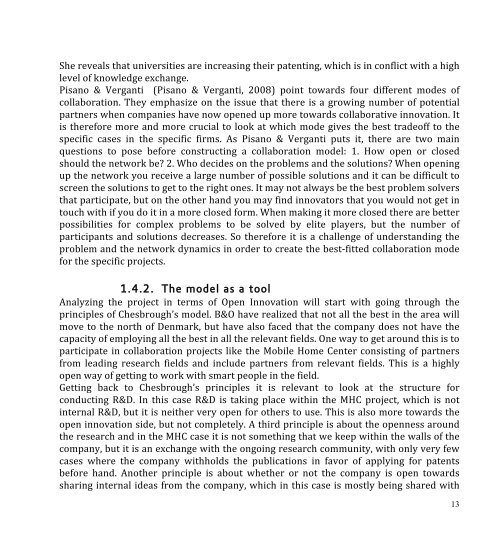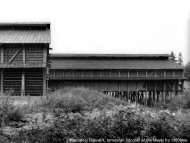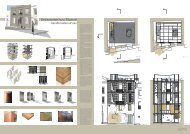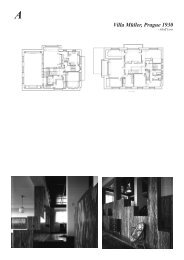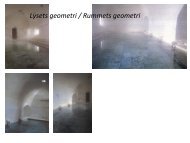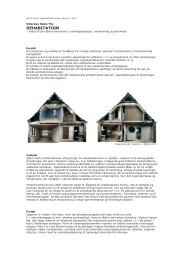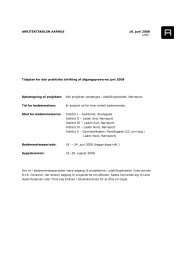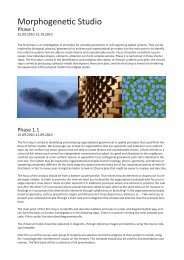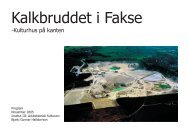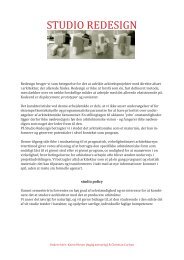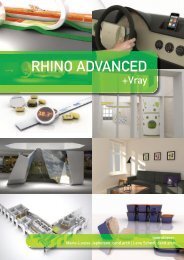-Tactics and Concepts for Highly Mobile People
-Tactics and Concepts for Highly Mobile People
-Tactics and Concepts for Highly Mobile People
You also want an ePaper? Increase the reach of your titles
YUMPU automatically turns print PDFs into web optimized ePapers that Google loves.
She reveals that universities are increasing their patenting, which is in conflict with a high<br />
level of knowledge exchange.<br />
Pisano & Verganti (Pisano & Verganti, 2008) point towards four different modes of<br />
collaboration. They emphasize on the issue that there is a growing number of potential<br />
partners when companies have now opened up more towards collaborative innovation. It<br />
is there<strong>for</strong>e more <strong>and</strong> more crucial to look at which mode gives the best tradeoff to the<br />
specific cases in the specific firms. As Pisano & Verganti puts it, there are two main<br />
questions to pose be<strong>for</strong>e constructing a collaboration model: 1. How open or closed<br />
should the network be? 2. Who decides on the problems <strong>and</strong> the solutions? When opening<br />
up the network you receive a large number of possible solutions <strong>and</strong> it can be difficult to<br />
screen the solutions to get to the right ones. It may not always be the best problem solvers<br />
that participate, but on the other h<strong>and</strong> you may find innovators that you would not get in<br />
touch with if you do it in a more closed <strong>for</strong>m. When making it more closed there are better<br />
possibilities <strong>for</strong> complex problems to be solved by elite players, but the number of<br />
participants <strong>and</strong> solutions decreases. So there<strong>for</strong>e it is a challenge of underst<strong>and</strong>ing the<br />
problem <strong>and</strong> the network dynamics in order to create the best-‐fitted collaboration mode<br />
<strong>for</strong> the specific projects.<br />
1.4.2. The model as a tool<br />
Analyzing the project in terms of Open Innovation will start with going through the<br />
principles of Chesbrough’s model. B&O have realized that not all the best in the area will<br />
move to the north of Denmark, but have also faced that the company does not have the<br />
capacity of employing all the best in all the relevant fields. One way to get around this is to<br />
participate in collaboration projects like the <strong>Mobile</strong> Home Center consisting of partners<br />
from leading research fields <strong>and</strong> include partners from relevant fields. This is a highly<br />
open way of getting to work with smart people in the field.<br />
Getting back to Chesbrough’s principles it is relevant to look at the structure <strong>for</strong><br />
conducting R&D. In this case R&D is taking place within the MHC project, which is not<br />
internal R&D, but it is neither very open <strong>for</strong> others to use. This is also more towards the<br />
open innovation side, but not completely. A third principle is about the openness around<br />
the research <strong>and</strong> in the MHC case it is not something that we keep within the walls of the<br />
company, but it is an exchange with the ongoing research community, with only very few<br />
cases where the company withholds the publications in favor of applying <strong>for</strong> patents<br />
be<strong>for</strong>e h<strong>and</strong>. Another principle is about whether or not the company is open towards<br />
sharing internal ideas from the company, which in this case is mostly being shared with<br />
13


